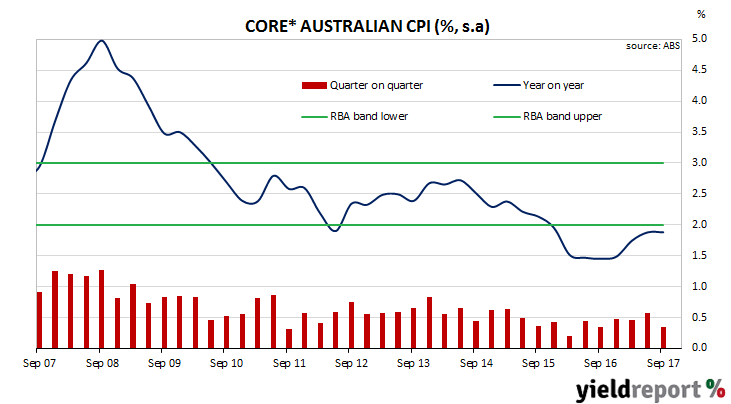For the greater part of the last decade, inflation rates in advanced economies have been low. In fact, inflation rates have been so low central banks of countries from around the world have expressed a desire for higher inflation rates. Currently, there is little sign of inflation in Australia moving to a higher range.
Figures for the September quarter have now been released by the ABS. The headline number was weaker than the expected 0.80%, as were seasonally-adjusted and core inflation figures. Unadjusted inflation was 0.60% for the quarter while seasonally-adjusted inflation came in at 0.40%. On a 12-month basis, each recorded 1.80%, down from the June quarter’s comparable figures of 1.90% for each measure.
Bond yields fell, especially at the short end. 3 year yields fell 5bps to 2.08% while 10 year bond yields slipped just 1bp to 2.79%. The AUD dropped around 0.30 U.S. cents on the news and then trended down to around 77 U.S. cents late in the day. Prior to the report’s release, the probability of a second RBA increase in November 2018 was around 40%. Afterwards, cash futures prices implied no second rate increase.
“Core” inflation measures favoured by the RBA, such as average of the “trimmed mean” and the “weighted median”, were in line with the market’s expected figure 0.40% for the quarter and 1.90% for the year.
* Average of Trimmed Mean & Weighted Median measures

